If you’ve just been camping in bad weather, you might be wondering how to wash a tent. Our step-by-step guide will outline when, why, and how to clean your tent inside and out!
We’ll explain when you should wash your tent, as well as the exact steps you’ll need to take. We’ll also give you some hints on troubleshooting if your tent requires some extra care.
Table of Contents
When Should I Wash My Tent?
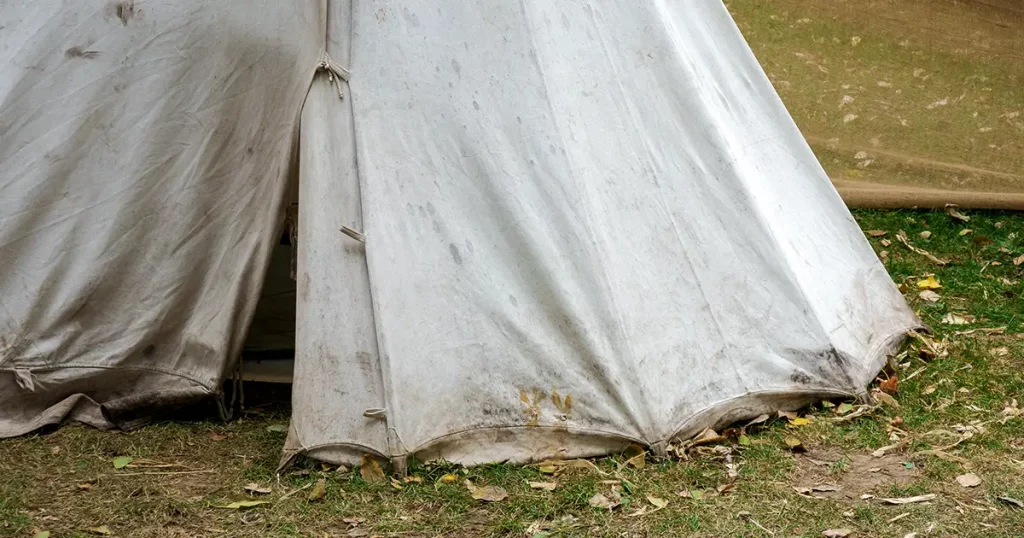
You don’t need to wash your tent fully after each use, but there are a few circumstances when it requires a proper wash:
- After being in the sun – the sun can ‘set’ dirt into your tent, meaning any mud or dirt will harden onto the fabric, so it may need a good wash afterward
- If it’s dirty – This goes without saying, but if your tent is visually dirty or covered in mud, it’s time to wash it.
- After camping near the sea – salty ocean air and sand can be corrosive, so it’s important to give your tent a good wash if you’ve been camping near the sea.
- After being near a campfire – if you’ve had a campfire going all week, it’s important to wash your tent in order to get rid of any residual smokey odors
If any of these apply to your tent, it’s time to give it a thorough clean.
Our 5-Step Guide on How to Wash a Tent
In this section, we’ll detail the following steps:
- Prep the Tent
- Spot Cleaning
- Immerse the Tent
- Rinse
- Dry and Check
Here’s what you’ll need to wash your tent:
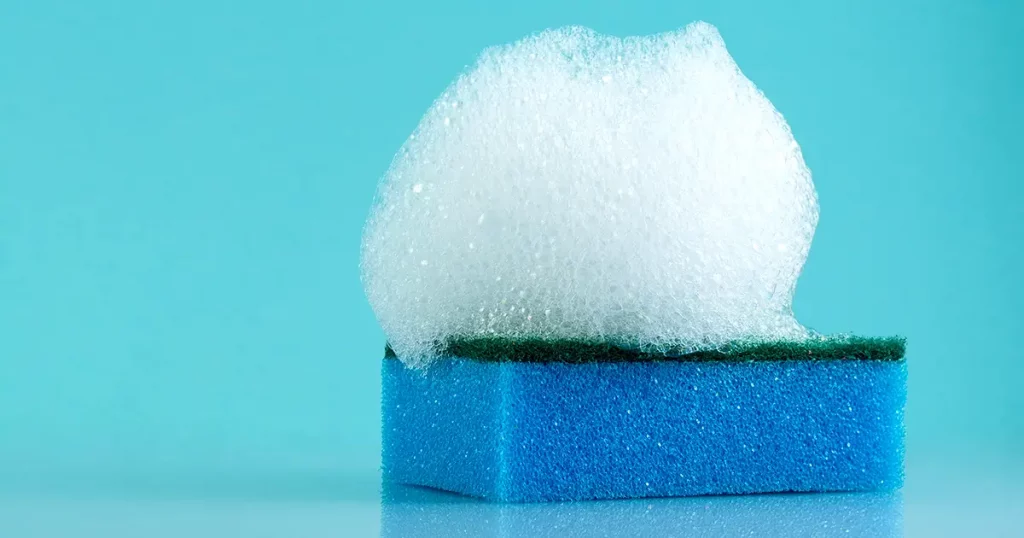
- Mild soap – you can use any mild dish soap to wash a tent, or you can get a soap specifically designed for the job. We suggest the Nikwax Tent & Gear Solarwash as it cleans and adds UV protection at the same time.
- A Soft Sponge
- A Bath Tub
Once you’ve gathered all your materials, it’s time to get to work! Here’s how to clean your tent:
1. Prep the Tent

Prep the tent for washing by checking for any debris, loose mud, or stones. You can also shake off, or sweep away, any dried-on sand. If there’s a lot of dirt, you may be able to use a vacuum.
2. Spot Cleaning
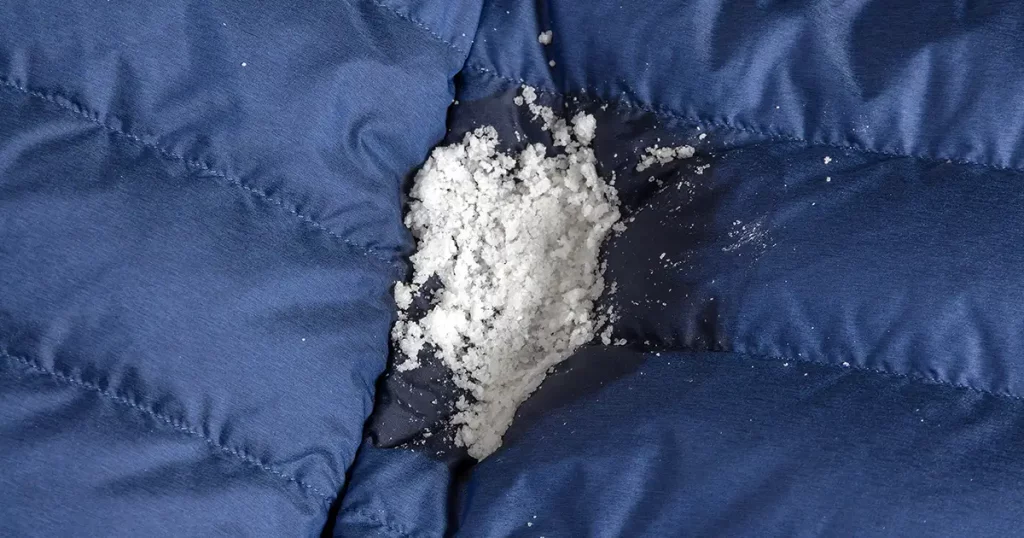
Find any particularly dirty areas and spot-clean them. This may require a little elbow grease (essentially, this means longer and harder scrubbing), depending on how severe the dirty areas are. Although it’s tempting to use a brush that is tough and will provide a more intense scrubbing technique, try to use a if you can – even if it requires a lot of soaking. Using something too abrasive can cause wear and tear to the tent.
3. Immerse the Tent
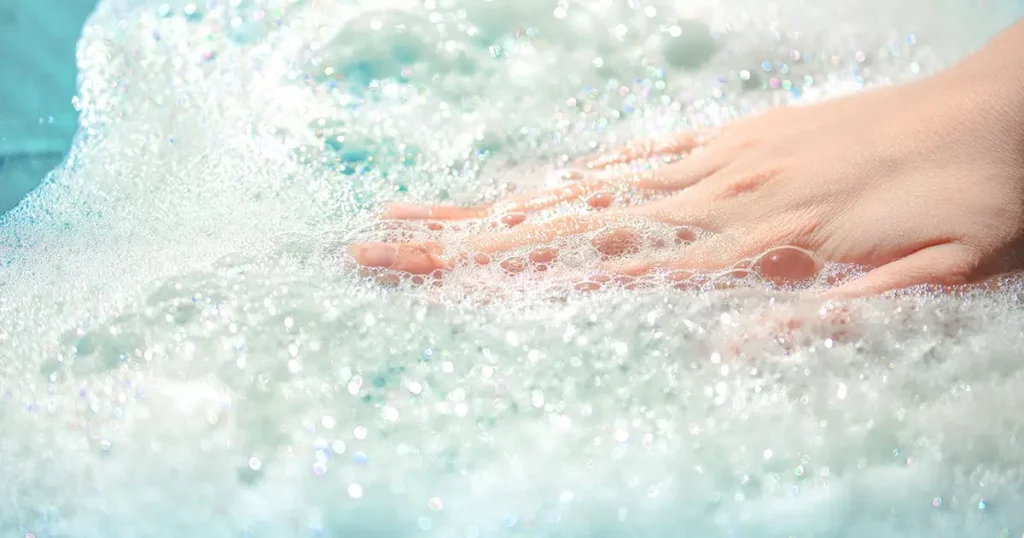
Immerse your whole tent in the Bath Tub , soaking it in soapy water. Allow it to soak for an extended period of time, then gently clean each area of the tent. You may have to repeat this step using fresh soap and water, depending on how much dirt remains after the first wash; it may also use a large amount of water if you have a large tent.
4. Rinse
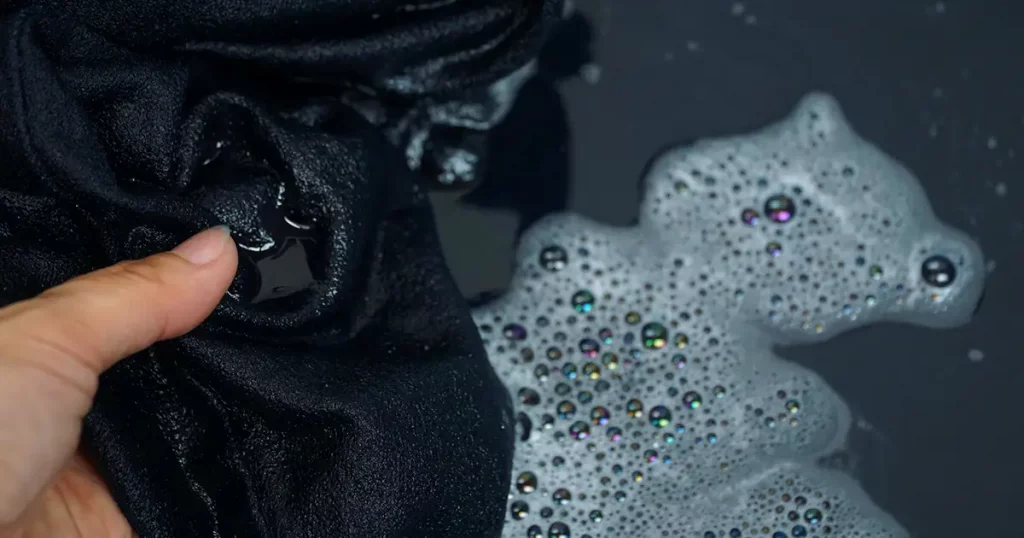
Rinse your tent, removing as much of the suds from the soap as possible. This may take some time and could require soaking and rinsing your tent in fresh water several times.
5. Dry and Check
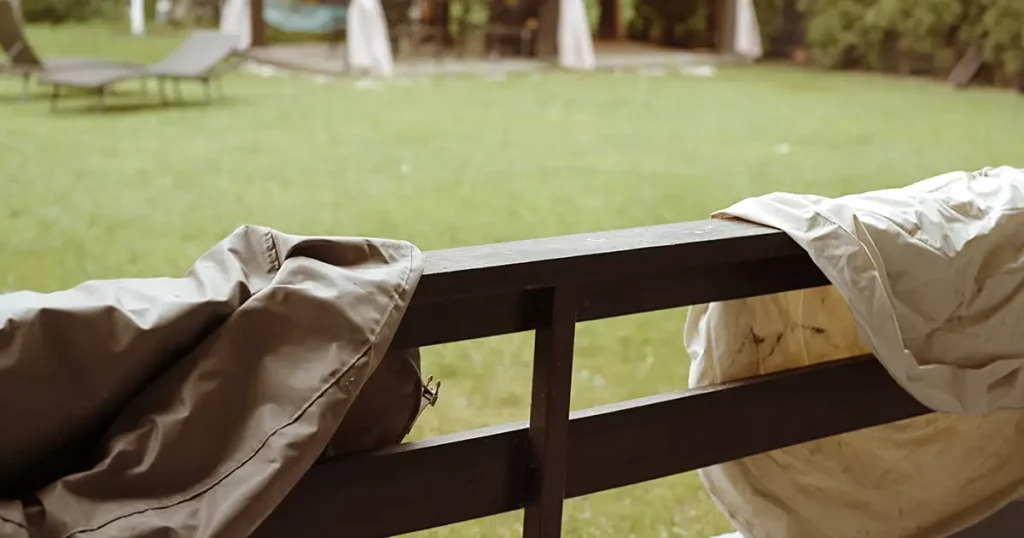
It’s important to always dry out your tent.
Hang your tent on a washing line in a warm, shaded area and check it over to see if you missed any spots. Allow it to dry completely before packing it away. This is essential, as damp areas can grow mold if left unattended.
Tent Troubleshooting
Your tent may require some extra attention, which is why you need to know some tent care basics. We’ve outline a list for what to do if you encounter any of the following problems:
My Tent is Moldy or Smelly
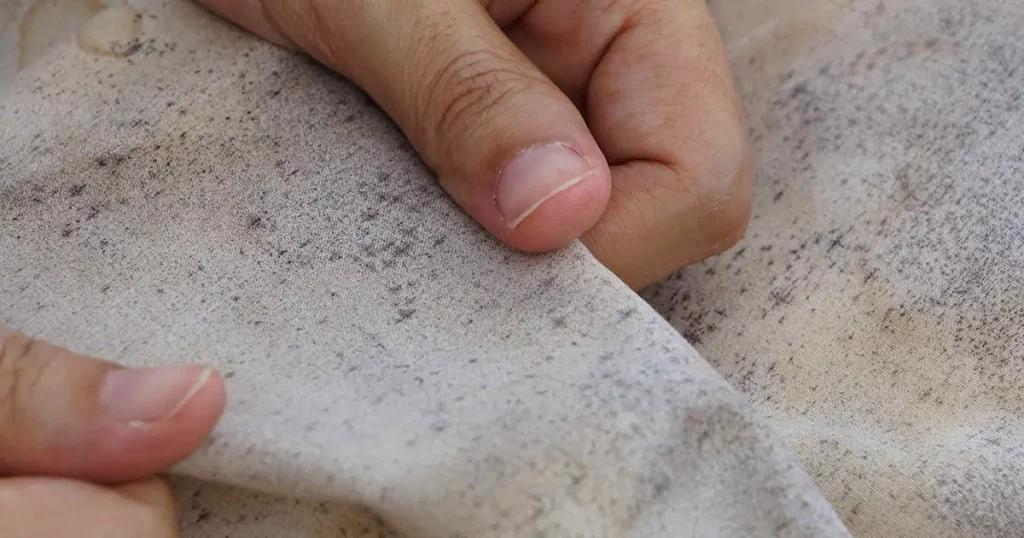
Any excess moisture in a tent will quickly produce mold, so it’s important to tackle all of it before it spreads. You can use specialized cleaners, such as a commercial Enzyme Cleaner, to break down the mold and remove odors. However, make sure that you don’t leave the cleaner on for longer than the instructions suggest – this is especially true if you have a waterproof tent as these cleaners could break down the coating on your tent.
We love the GEAR AID Revivex Odor Eliminator which can help to freshen up your tent and remove any unwanted odors.
The Zippers Are Dirty
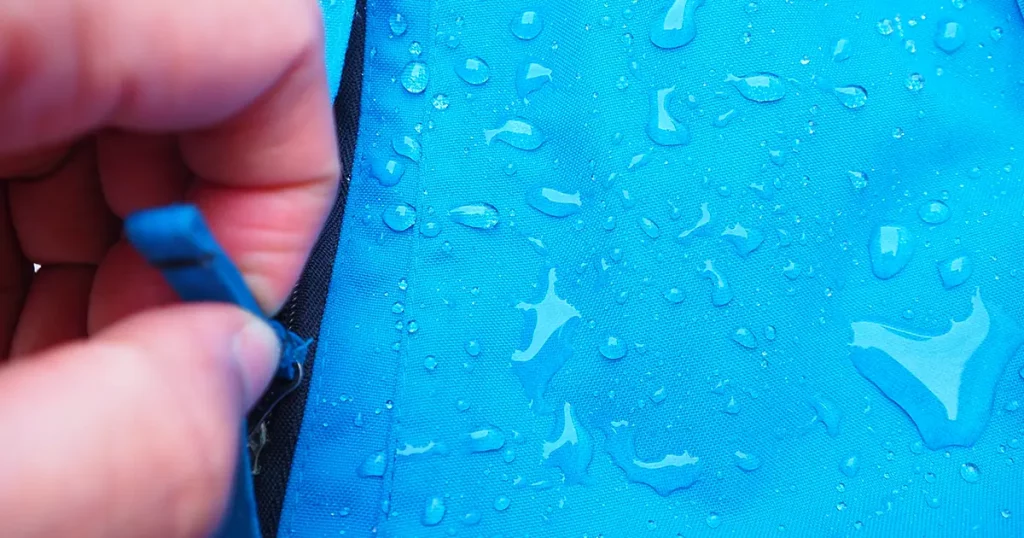
Zippers can get clogged, which may prevent them from functioning consistently. Use a toothbrush to scrub away any dirt. Any stubborn dirt on a zipper may require soaking before it can be removed.
The Poles Are Dirty
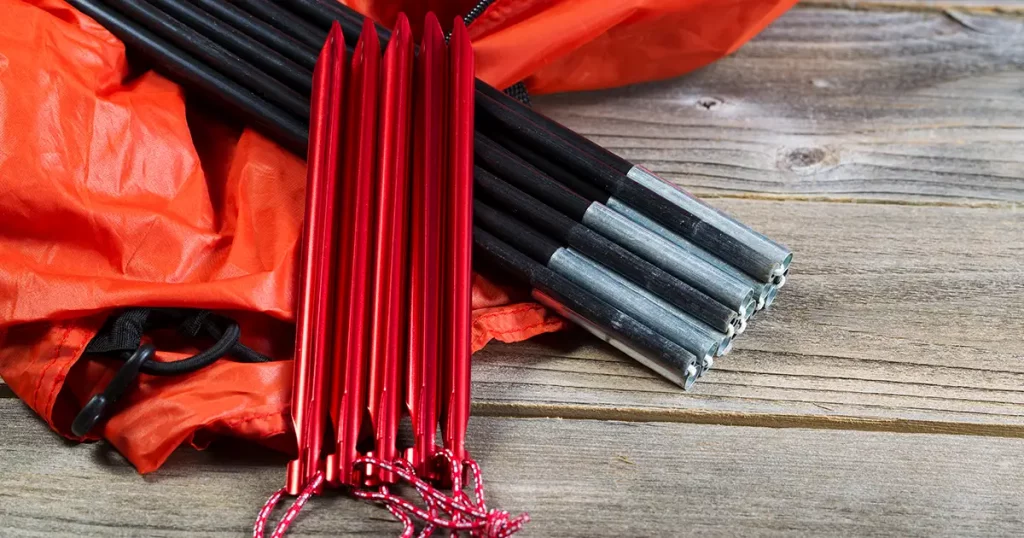
You can simply wipe the poles down with a soft cloth dipped in soap and water to remove dirt. Now is a good time to check your tent poles for any bent areas or noticeable damage.
There Are Holes In My Tent
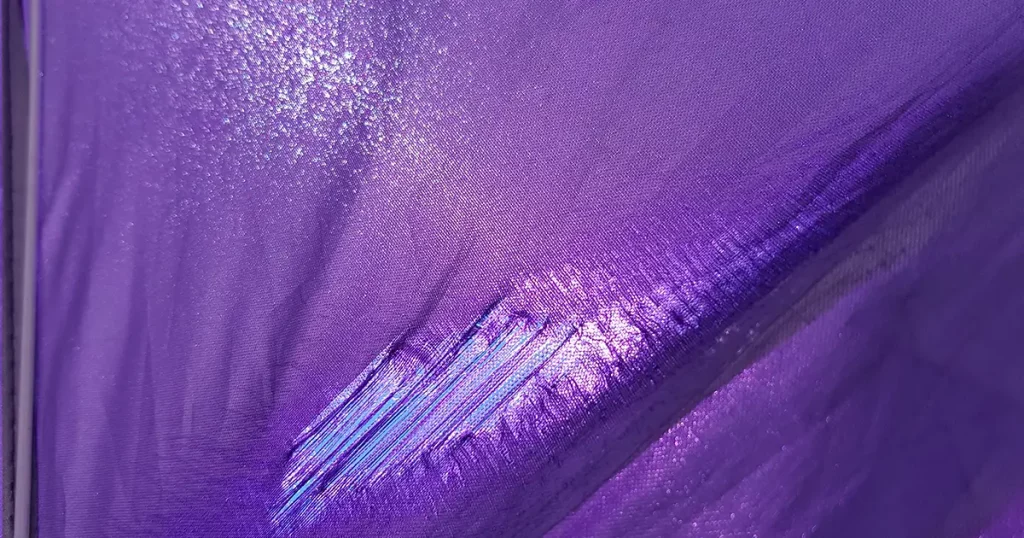
Holes can happen from time to time, so it’s useful to know how to repair a tent. You can use a tent repair kit, like the Coghlan's Nylon Tent Repair Kit. Make sure you choose a tent repair kit that matches the material your tent is made from, just for the purpose of consistency and aesthetics. This is an excellent and incredibly useful item to bring camping too.
The Waterproof Coating Is Wearing Away
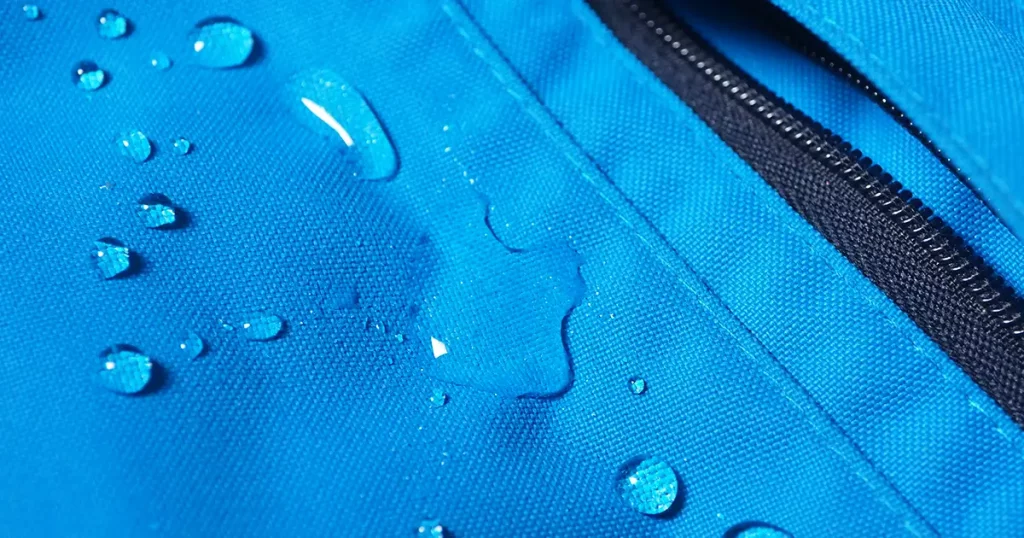
Sometimes, the waterproof coating on your tent for rain may wear away due to exposure to the elements. Use a waterproof coating spray like the Kiwi Camp Dry Heavy Duty Water Repellent, this will help to coat any worn-away areas.
This is useful, as the waterproof coating on your tent can help to prevent rain from dripping through. Exposed, worn-away areas can cause leaks in a downpour, but re-waterproofing can fix this problem.
Make sure that you allow your tent to dry completely before packing away.
You can check out the Trespass guide on how to re-waterproof a tent for more guidance.
Storing Your Tent
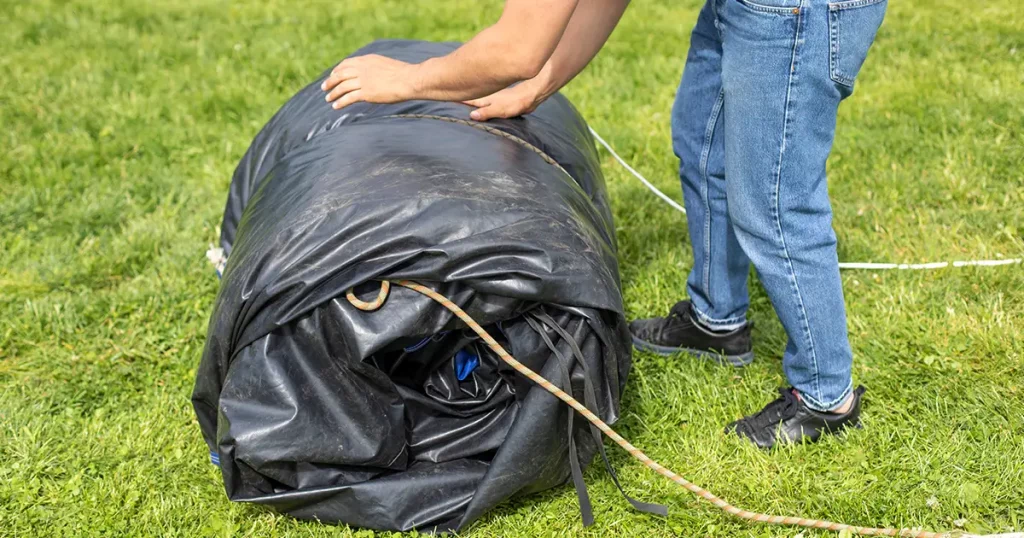
It’s essential to store your tent properly. Storing it in a damp place or not allowing it to dry first, for example, can cause mold to grow.
The sack your tent comes in is great for transport, but if you can, you should store your tent in a pillowcase or a large mesh bag. This allows the fabric to breathe.
Store your tent in a cool, dry place, away from sunlight (as this can cause UV damage). UV damage can cause your tent fabric to fade, creating a patchy and discolored aesthetic. It can also weaken a fabric over time, making it more vulnerable to wear and tear in the future.
Our Final Thoughts
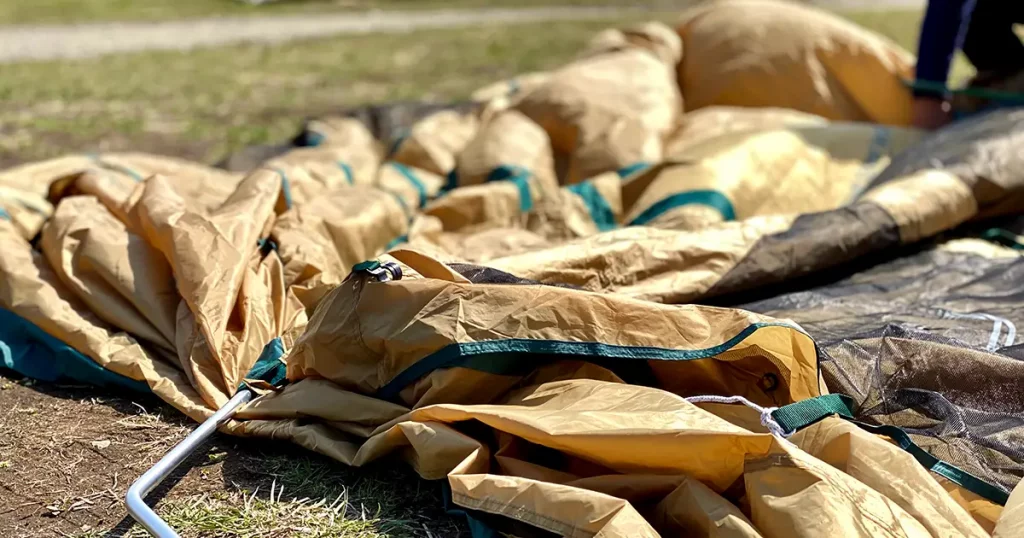
We hope this has given you all you need to know about washing your tent. If you think it would be helpful to someone you know, please feel free to share this guide with them.
If you have any tent cleaning tips, please leave us a comment below. We’d love to hear your wisdom!

